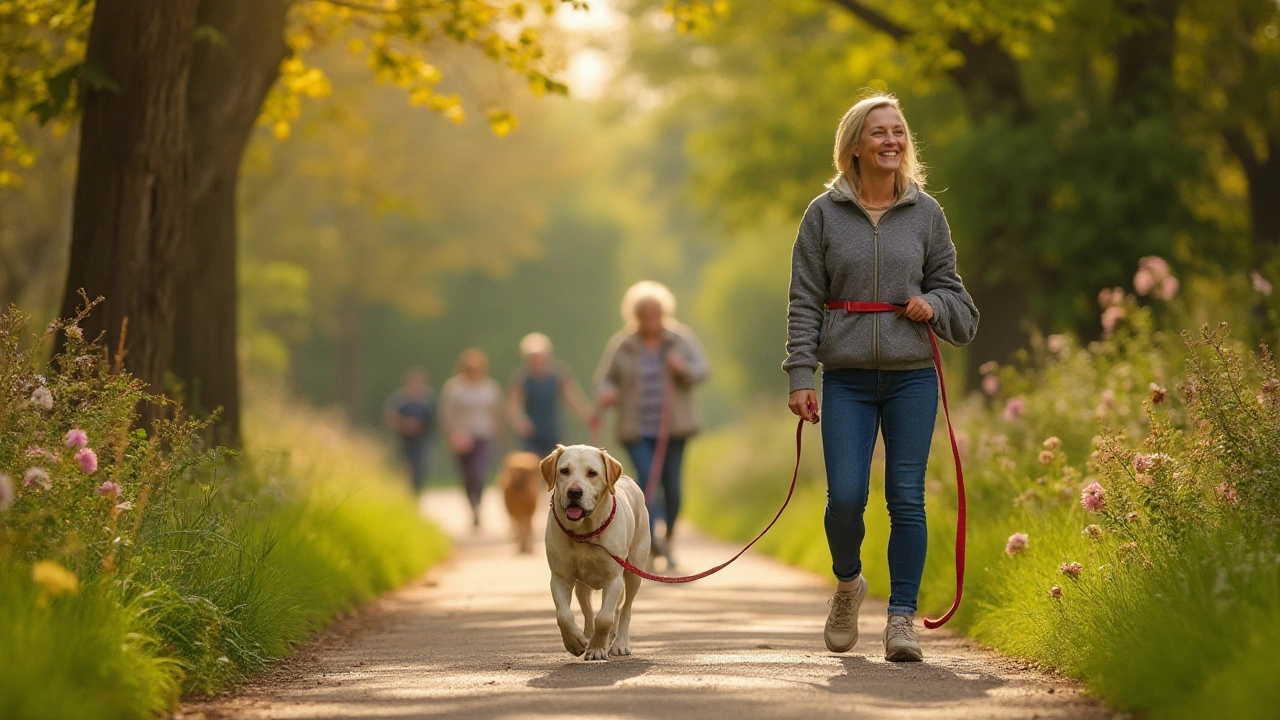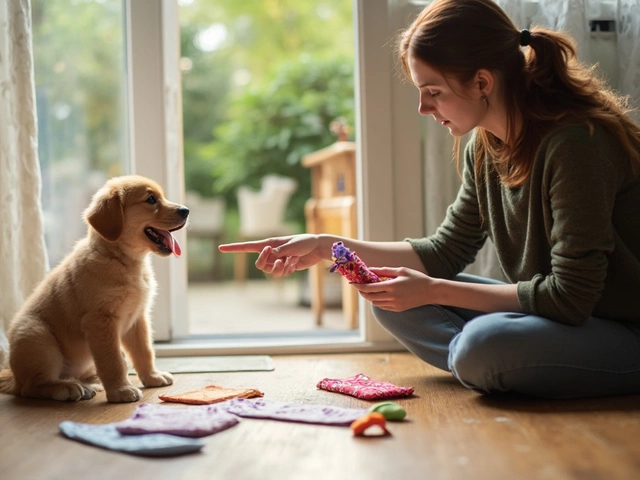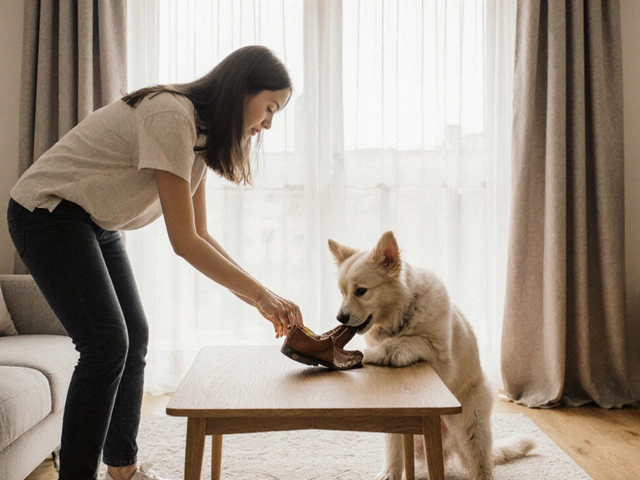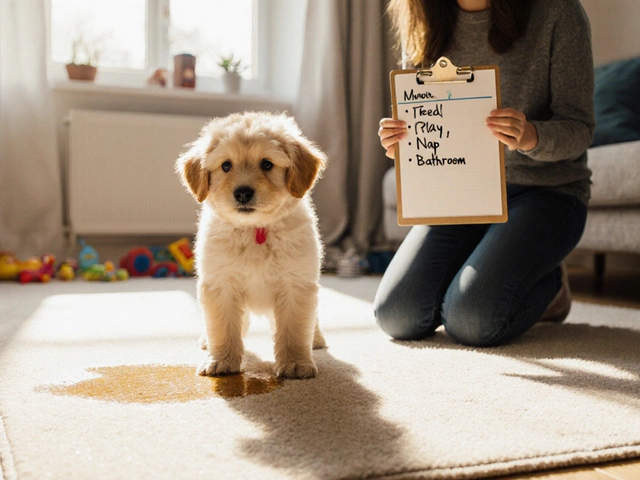Walking a dog is more than just a routine—it’s an adventure filled with curious sniffs and the potential for tugging excitement. Yet, if your canine companion persistently pulls on the lead, this joyful activity can turn into a tiresome tussle. Many dog owners face this issue, seeking solutions that balance control with their dog’s natural urge to explore.
The journey to a more pleasant walk begins with understanding why your dog pulls and selecting the right tools to help manage it. From choosing the appropriate collar to employing effective training techniques, every step counts towards a successful stroll. With time, practice, and patience, those brisk walks can transform into a leisurely, enjoyable parade for both you and your furry friend.
- Understanding Your Dog's Pulling Behavior
- Choosing the Right Collar
- Techniques for Loose-Leash Walking
- Patience and Consistency in Training
Understanding Your Dog's Pulling Behavior
As you head out for your daily stroll, the bustling streets or quiet paths beckon your furry pal into a world of sights and smells waiting to be explored. Yet, this enthusiasm often translates into relentless tugging on the leash. Understanding why your dog pulls is the first step towards addressing the issue. Dogs are naturally curious and wired to explore their environment with a keen sense of smell. These instincts can often mean their priority is reaching that fascinating scent rather than staying by your side.
A strong pull on the leash is also a sign of excitement and energy. Many dogs see a leash as a cue for fun and adventure, and their anticipation bubbles over once the door swings open. For breeds with a high hunting or working drive, the instinct to move forward predates their desire to walk calmly. This behavior is not out of defiance but rather stems from deeply rooted natural instincts. Additionally, some dogs learn to pull simply because it has been reinforced over time—if they pull and get to where they want, their pulling behavior is rewarded.
The motivation behind pulling can vary based on individual dogs. Some do it out of anxiety or fear, especially if they are trying to escape or distance themselves from something intimidating. Others might simply have had a poor start with leash training, making them oblivious to the cues for a gentler walk. For instance, statistics suggest that nearly 80% of pet dogs have never attended formal training classes, contributing to misunderstood walking behaviors.
“Dogs are not trying to annoy you; they're communicating their needs and reactions to the world,” says Dr. Karen London, an animal behaviorist. “The key to modifying pulling behavior is understanding why it happens.”
Recognizing these factors is essential for tailoring an effective training approach. Understanding the \
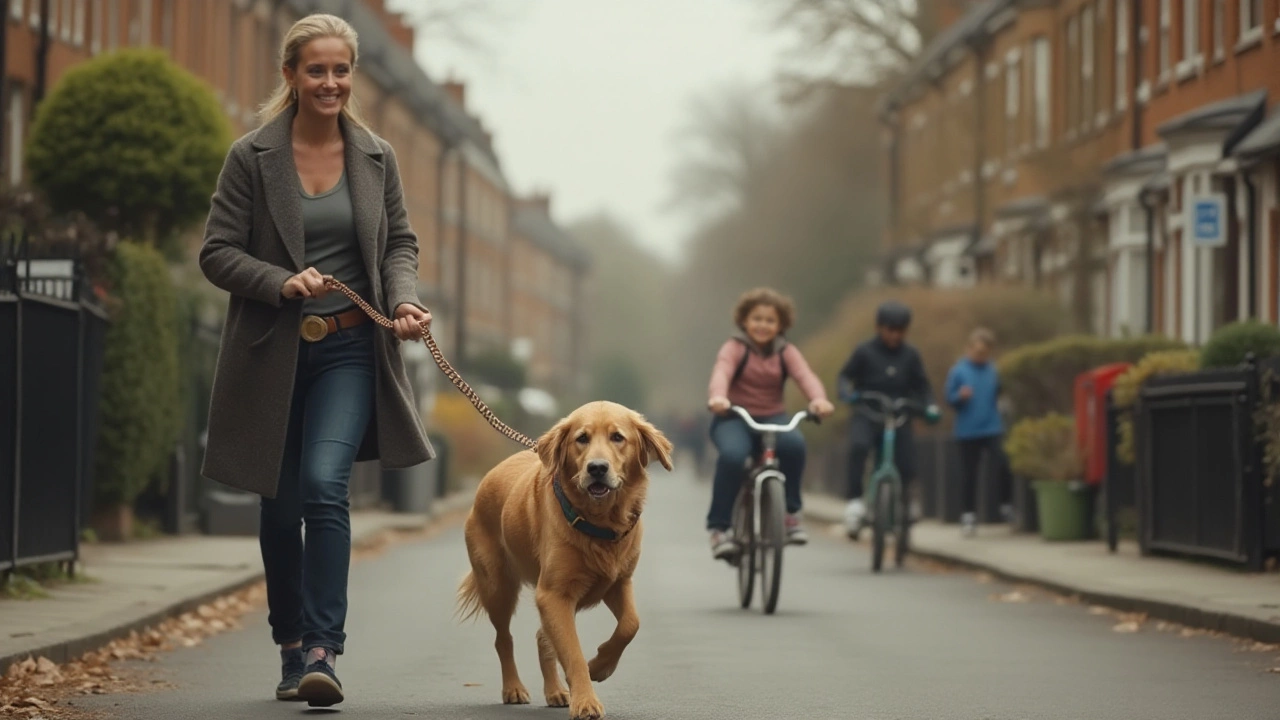
Choosing the Right Collar
When it comes to selecting a dog collar for leash training, the right fit and type can make a significant difference in how effectively you can manage your dog’s pulling. Not all collars are created equal; each has its specific purpose and advantage. From flat collars to harnesses, each option offers a unique approach to helping you control your dog during walks. Dog training experts often point out that using inappropriate equipment can exacerbate pulling issues or compromise your dog's safety. For instance, a standard flat collar might be ideal for dogs that don’t pull, but a puller might require something a bit more specialized to ensure both comfort and control.
One popular tool for addressing pulling is the front-clip harness. Unlike traditional back-clip harnesses, which can sometimes encourage pulling by allowing dogs to lean into the restraint and drag you forward, front-clip harnesses change the dog’s direction when they pull. This equipment discourages the behavior because it redirects their movement, which makes it less rewarding to pull ahead. Many pet owners who've switched to this type of harness notice immediate improvements in their dog's behavior during walks. According to a review by the American Kennel Club, properly adjusted front-clip harnesses can help minimize pulling while ensuring your dog's comfort.
Another effective option is the head halter. It operates similarly to a horse's halter, offering greater control over the direction your dog is facing. Whenever a dog wearing a head halter begins to pull, their head is gently turned toward you, which naturally limits their motion forward. While a head halter can be a powerful tool for training, it's crucial to pair them with proper guidance and positive reinforcement to teach loose-leash skills effectively. It's also important to acclimate your dog to this collar slowly to ensure they are comfortable wearing it during walks. There’s a learning curve, both for the dog and the owner, but with time and persistence, this strategy can lead to calmer walks.
For particularly stubborn pullers, a martingale collar, often called a limited-slip collar, provides a bit more control. It tightens slightly under tension, offering just enough resistance to let the dog know to ease back without choking them. This makes it particularly useful for dogs whose necks are roughly the same width as their heads, preventing escape while still allowing for humane correction. According to trainers from the Humane Society, martingale collars are often recommended for breeds with slender necks such as Greyhounds and Whippets.
In choosing the best leash training accessory, always consider your dog's specific needs, temperament, and comfort. Regularly check that the collar is fitted correctly—not too tight to choke but snug enough that it won’t easily slip off during those energetic bursts. Remember, every tool is most effective when used as part of a broader training strategy. Combined with patience, consistency, and the right collar, remarkable improvements can be seen in any dog’s walking behavior.
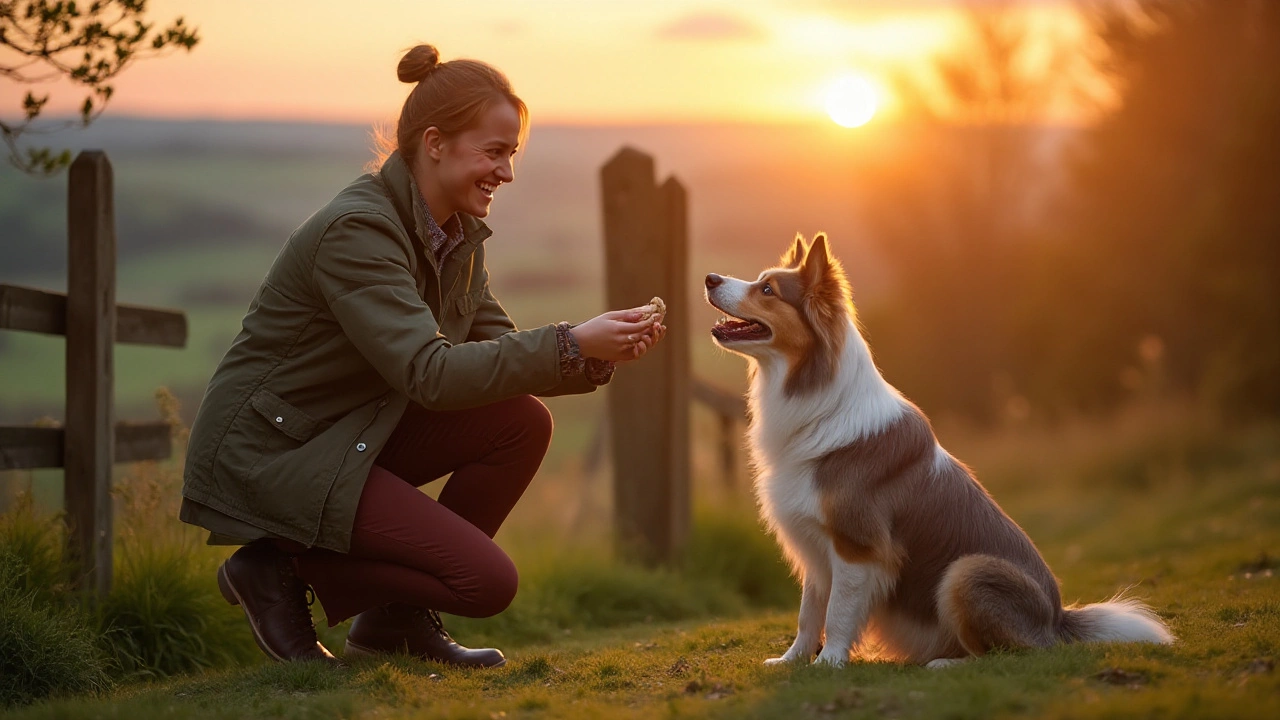
Techniques for Loose-Leash Walking
Walking your dog comfortably on a leash begins with understanding and patience. No one expects instant results, but with consistent practice, loose-leash walking is achievable. First, it's vital to remain mindful of your dog’s excitement and pace. A highly motivated dog will naturally pull towards anything that catches their eye—be it other dogs, squirrels, or new people. Start by practicing in a low-distraction environment such as your own backyard where your dog feels comfortable and distractions are minimal. Gradually increase the level of distractions as your dog gets more confident with their new skills.
With a simple leash in one hand and treats in the other, begin your session. Use a clicker or a word such as "yes" to signal positive behavior. Reward your dog every time they walk beside you without pulling. This teaches them that staying close to you is more rewarding than investigating everything that piques their interest. If your dog pulls, stop immediately. Stand still and only proceed when the leash becomes slack. Remember, leash training is a test of your patience.
A critical piece of advice comes from renowned animal behaviorist Patricia McConnell who said,
“Teaching heel or loose-leash walking is best accomplished through a humane and sensitive training process where the dog’s emotional state is considered.”This highlights the importance of staying calm and rewarding consistently, making training a pleasant experience for both you and your pet.
As your dog improves, start adding in turns and stops unpredictably so your companion learns to pay more attention to you. An important tip is to vary your pace intermittently, alternating between walking slowly and picking up speed. This keeps the walk interesting and teaches your dog to stay alert and responsive. Additionally, incorporating games during walks can significantly improve dog training. Games such as "find it" using hidden treats or toys can make walks stimulating and educational.
When progressing to new areas with more distractions, remind yourself to consistently use the same cues and rewards. Dogs thrive on routine and familiar patterns. And as repetitions build familiarity, it increases their confidence and reduces pulling. Sometimes, employing a dog collar designed for pulling dogs, like a head harness or a no-pull harness, can provide added control and support without causing harm.
Consider all these techniques as stepping stones towards peaceful walks—valuing routine, recognizing challenges, and celebrating each small victory. This approach ultimately strengthens the bond between you and your dog, making each outing enjoyable. After all, these moments are about savoring those special outings with your enthusiastic partner while exploring the world, one relaxed paw step at a time.
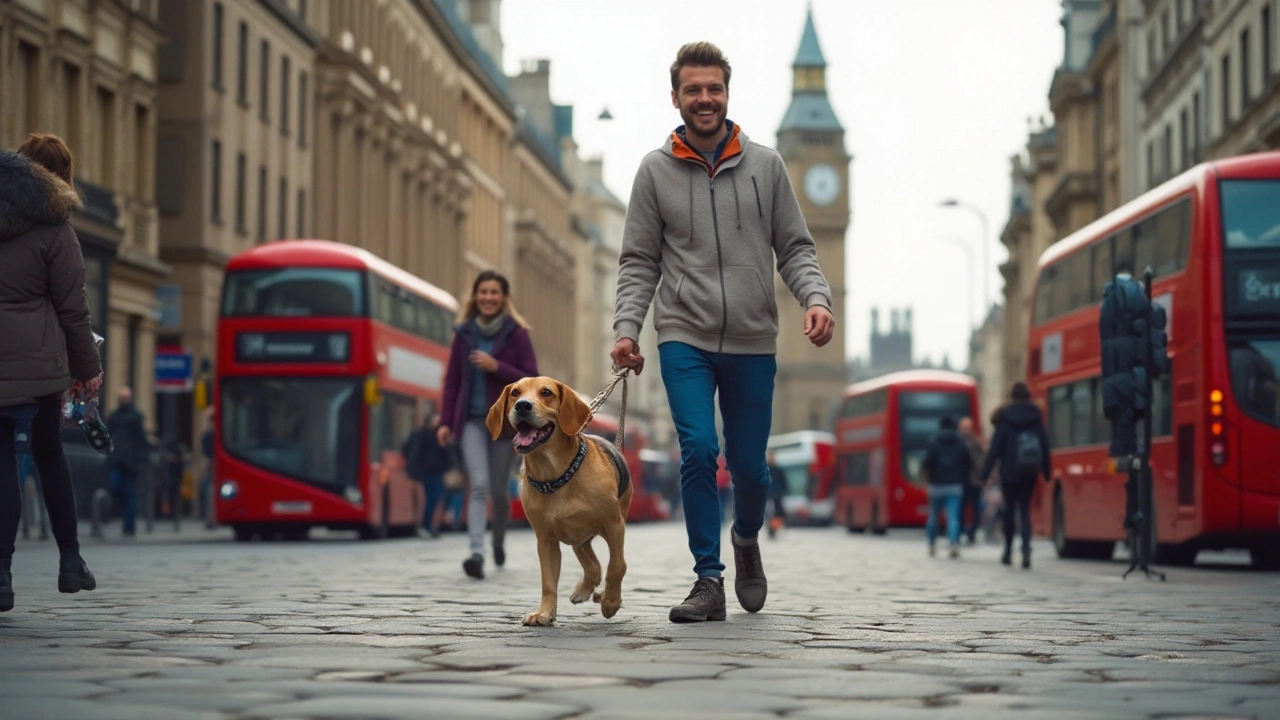
Patience and Consistency in Training
Training your dog to walk politely on a leash without pulling requires two key ingredients: patience and consistency. These traits are essential because, unlike humans, dogs don’t naturally understand the concept of walking calmly at your side. For them, the world is full of excitement, scents, and distractions, which all vie for their attention each time they step outside. To successfully curb the habit of pulling, you must remain steady and committed to a routine that reinforces good behavior. Many trainers agree that establishing a regular training schedule and sticking to it is crucial. Dogs thrive on routine, and knowing what to expect helps them understand what is being asked of them.
Engaging in consistent training sessions gradually builds a foundation where your dog begins recognizing the cues and commands associated with walking. It's best to start training in a low-stimulation environment so your dog can focus entirely on you without the temptation of distractions. Begin with short, frequent sessions to maintain your dog’s interest and motivation. As they succeed, slowly increase the difficulty by introducing new environments and distractions. It’s important to remember that not every session will be perfect, and progress might seem slow at times. Don’t lose heart or become discouraged. Instead, celebrate small victories and improvements along the way. Consistency doesn’t mean being perfect, but rather it’s about creating and sticking to a reliable routine.
Strong Bonds through Steady Practices
Patience in training isn’t just about waiting—it’s an active process that involves constantly assessing your dog’s progress and adjusting your training methods accordingly. Dogs often take cues from their owners' reactions, so maintaining a calm and positive demeanor is imperative. Your patience not only teaches them what you expect but also strengthens the bond you share. Dogs are particularly perceptive to human emotions, and a stressed or impatient handler can inadvertently create a tense environment, which is not conducive to learning. Positive reinforcement forms a big part of patient training. Offering rewards such as treats, praise, or playtime when your dog exhibits desired behaviors on walks creates a positive association with the behavior.
Renowned dog trainer Victoria Stilwell once said, “Patience and perseverance have a magical effect before which difficulties disappear and obstacles vanish.” This highlights the importance of a calm and resilient approach to training. Trust that your hard work and dedication will lead to success over time. Fostering an environment of patience and consistency turns walks into an opportunity to grow closer with your dog and enhance their understanding of your expectations. Dogs are intelligent creatures and, with time and effort, they will learn to walk beside you as a trusting partner.
